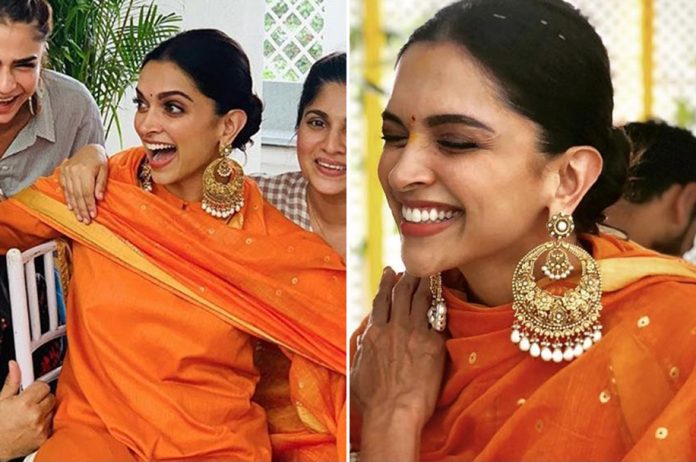Orange is a widely recognized colour among spiritual seekers and ascetics in Hinduism. It represents renunciation, detachment from worldly pursuits, and a single-minded pursuit of spiritual growth and enlightenment.
It is akin to the colour of fire, symbolising energy, power, and the transformative aspect of the divine. It embodies the fervent dedication of devotees towards their spiritual goals.
In Hindu philosophy, orange represents the balance between the fiery red (representing action and dynamism) and the serene yellow (representing wisdom and knowledge). This balance is seen as essential for spiritual progress.
In yogic traditions, the colour orange is associated with the Svadhisthana or Sacral Chakra. This chakra is linked to creativity, sensuality, and the flow of vital energy.
It is a vibrant and lively colour that can make a bold statement in ethnic attire.
Shardiya Navratri is a significant Hindu festival celebrated for nine nights and ten days. The term “Shardiya” refers to the autumn season in the Hindu calendar, during which this festival occurs. The word “Navratri” is a combination of two Sanskrit words: “Nav” meaning nine, and “Ratri” meaning night. Thus, Navratri translates to “nine nights.” Day one of this nine-day-long celebration is dedicated to the Goddess. “Shailputri” literally translates to “Daughter of the Mountain,” where “Shail” means mountain and “putri” means daughter. Devotees wear orange on this day to pay their obeisance to the Devi.
Also read | Here’s how you can build a capsule wardrobe for any season
Here are some ways in which you can style orange ethnic outfits in Navratri:
Anarkali Suit:
Style: An orange Anarkali suit with a flowing, flared silhouette and intricate embroidery or embellishments in gold or contrasting colours can be a stunning choice for festive occasions or weddings.
Lehenga Choli:
Style: A vibrant orange lehenga with intricate embroidery or embellishments paired with a contrasting choli (blouse) and dupatta creates a striking ensemble, perfect for weddings or special occasions.
Accessories: Opt for heavy bridal jewellery, including a maang tikka, choker necklace, and statement earrings.
Palazzo Suit:
Style: A palazzo suit in a lively shade of orange, paired with a contrasting dupatta and a well-fitted kurta, offers a comfortable yet stylish option for festive gatherings or casual events.
Accessories: Choose statement earrings, bangles, and a matching clutch or potli bag.
Kurti with Embroidered Bottom:
Style: Combine a plain or lightly embellished orange kurti with heavily embroidered bottoms like a skirt or sharara. This fusion look is versatile and can be worn for both formal and semi-formal occasions.
Accessories: Statement earrings, a chunky bracelet, and ethnic footwear like juttis or mojris.
Patiala Suit:
Style: A Patiala suit in bright orange with a heavily embroidered dupatta and pleated salwar creates a traditional and graceful look. This outfit is perfect for cultural events and celebrations.
Accessories: Pair with traditional Punjabi jewellery like chandbalis, a kada (bangle), and juttis.
Silk Sari with Zari Border:
Style: A rich orange silk saree with a contrasting zari (metallic thread) border exudes elegance and is ideal for formal events or festive occasions.
Accessories: Opt for gold jewellery like a temple necklace, jhumkas, and a bindi for a classic South Indian look.
Angrakha Kurta with Palazzo:
Style: An Angrakha-style kurta in orange with intricate detailing, paired with wide-legged palazzo pants, offers a contemporary and stylish option for casual gatherings or daytime events.
Accessories: Simple, statement earrings and a sleek clutch bag.
For more latest fashion news, click here.


